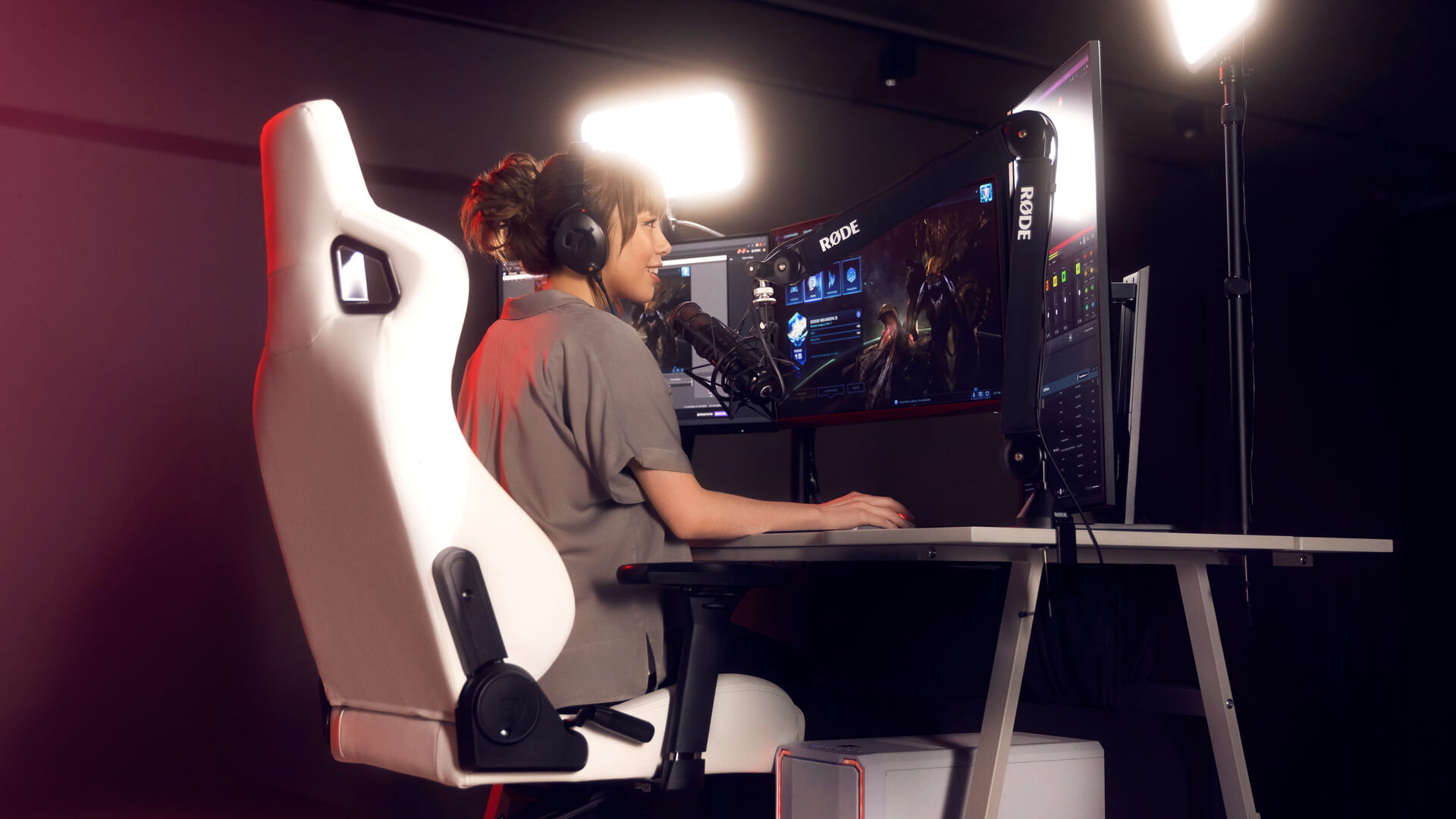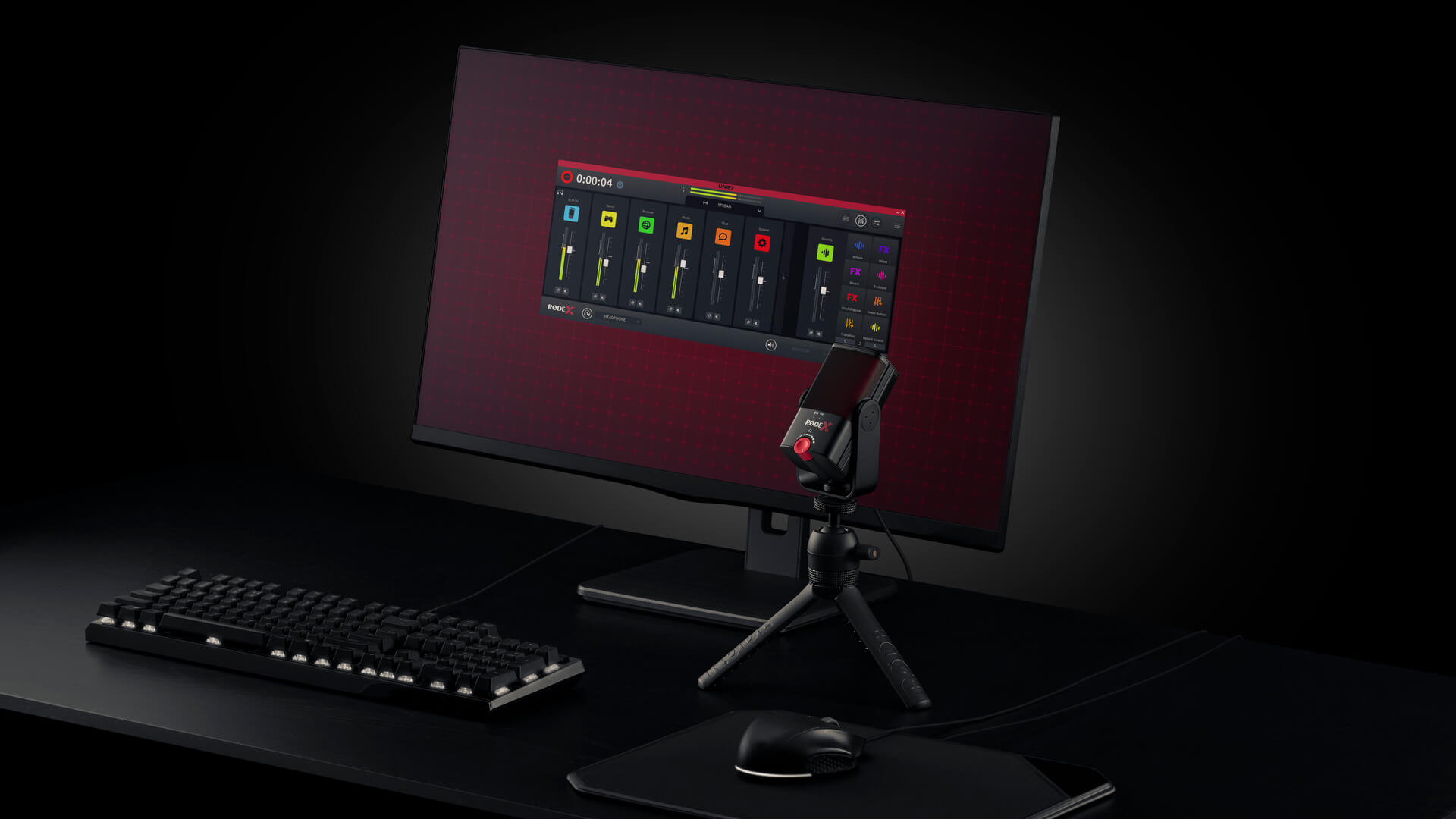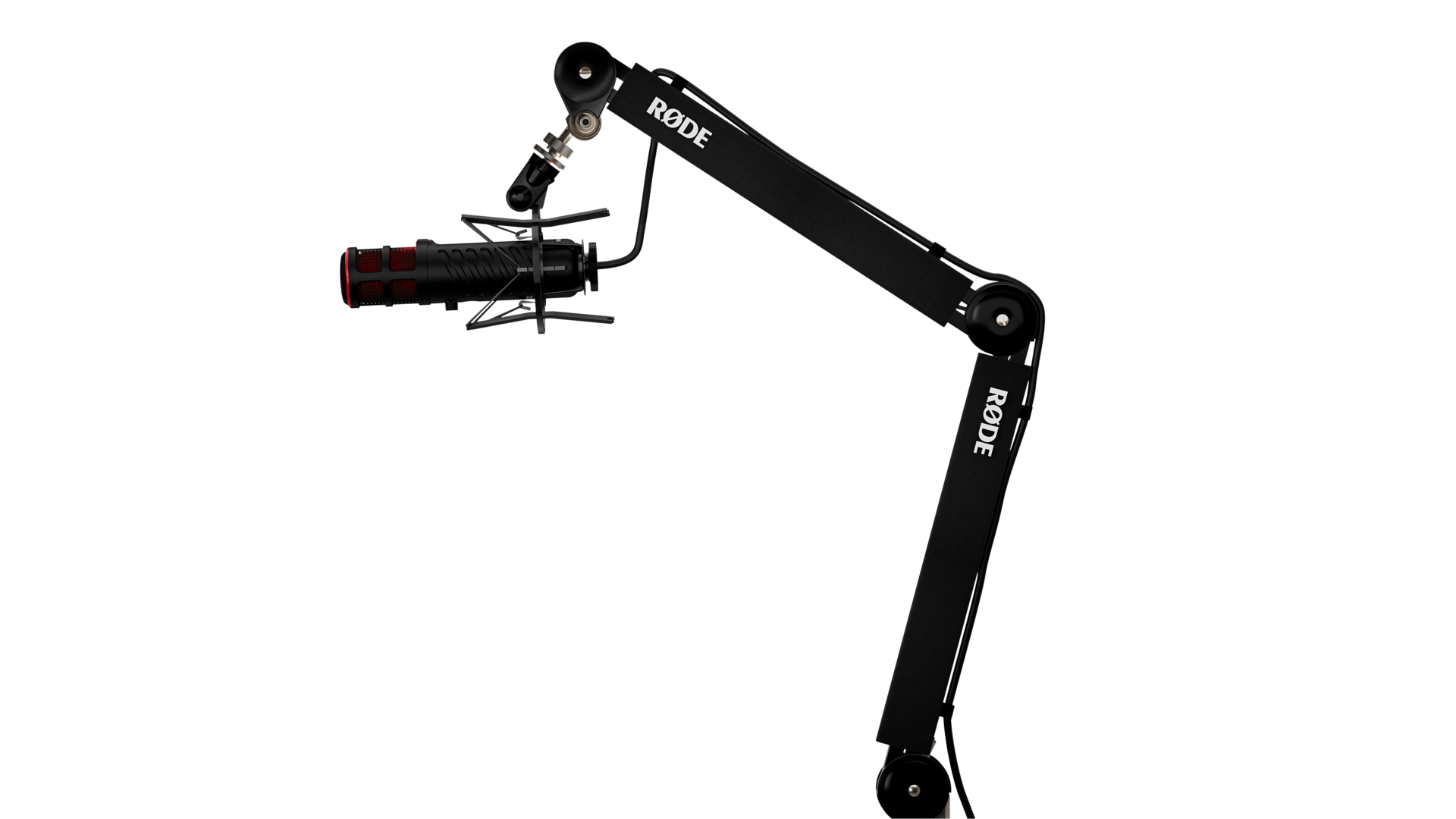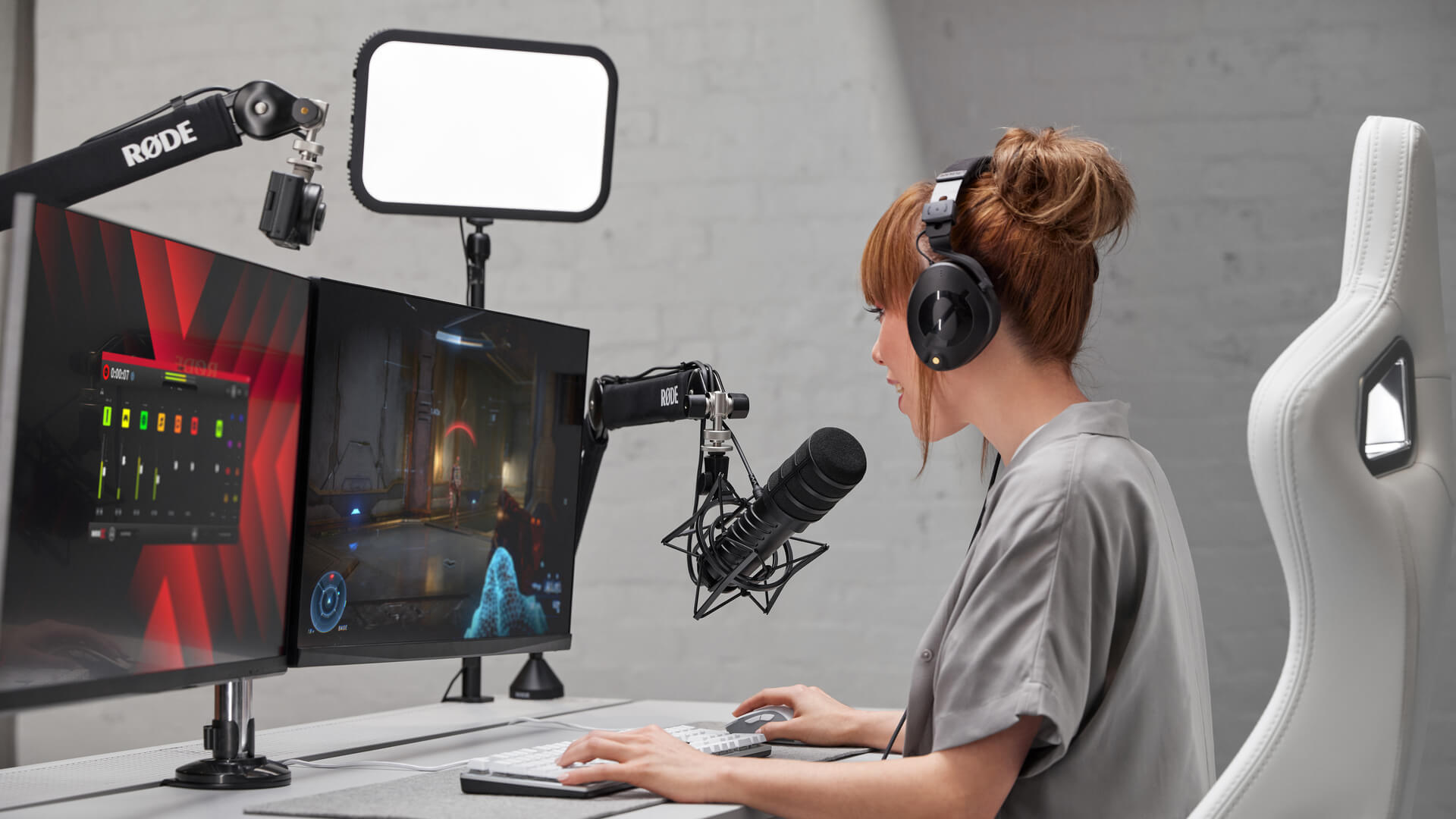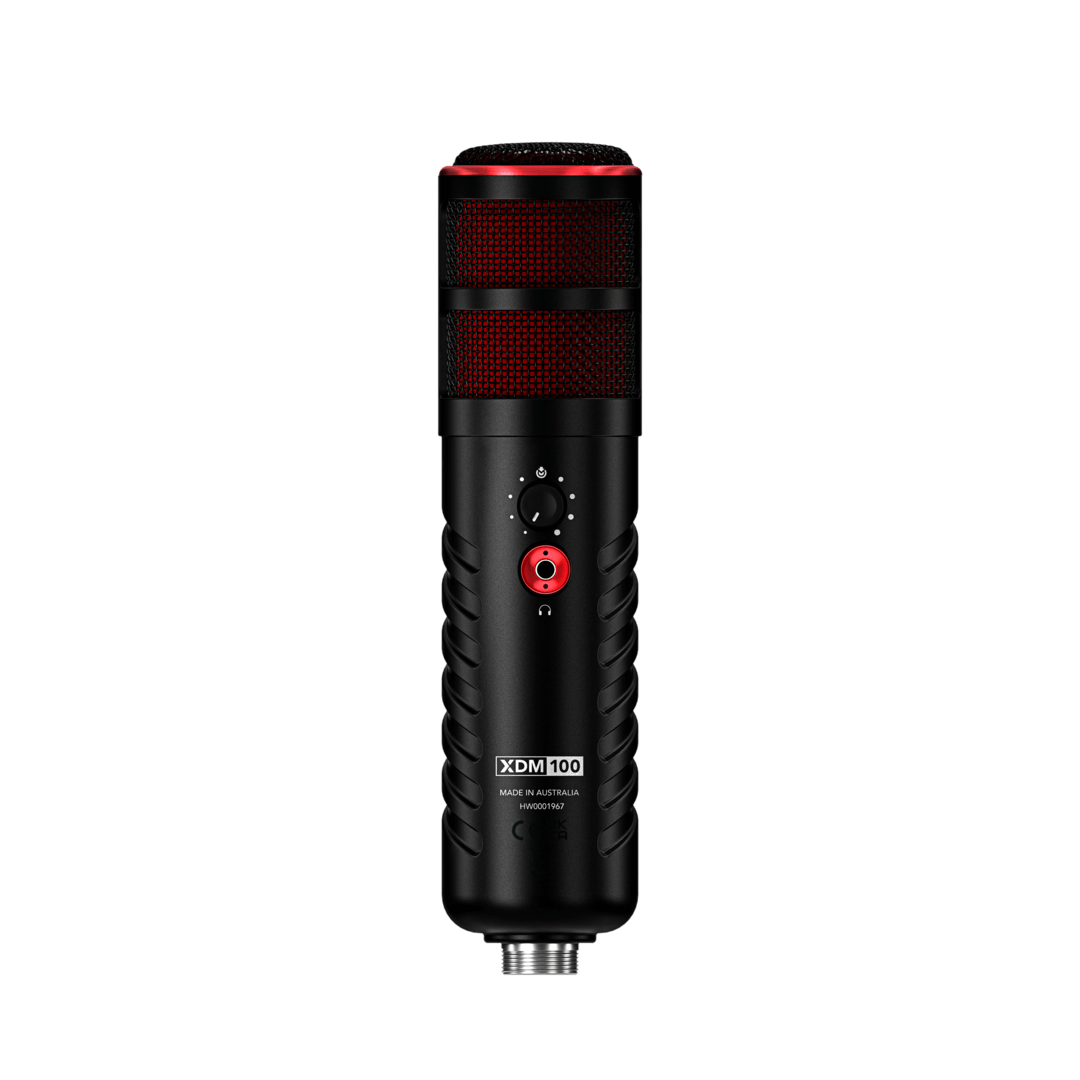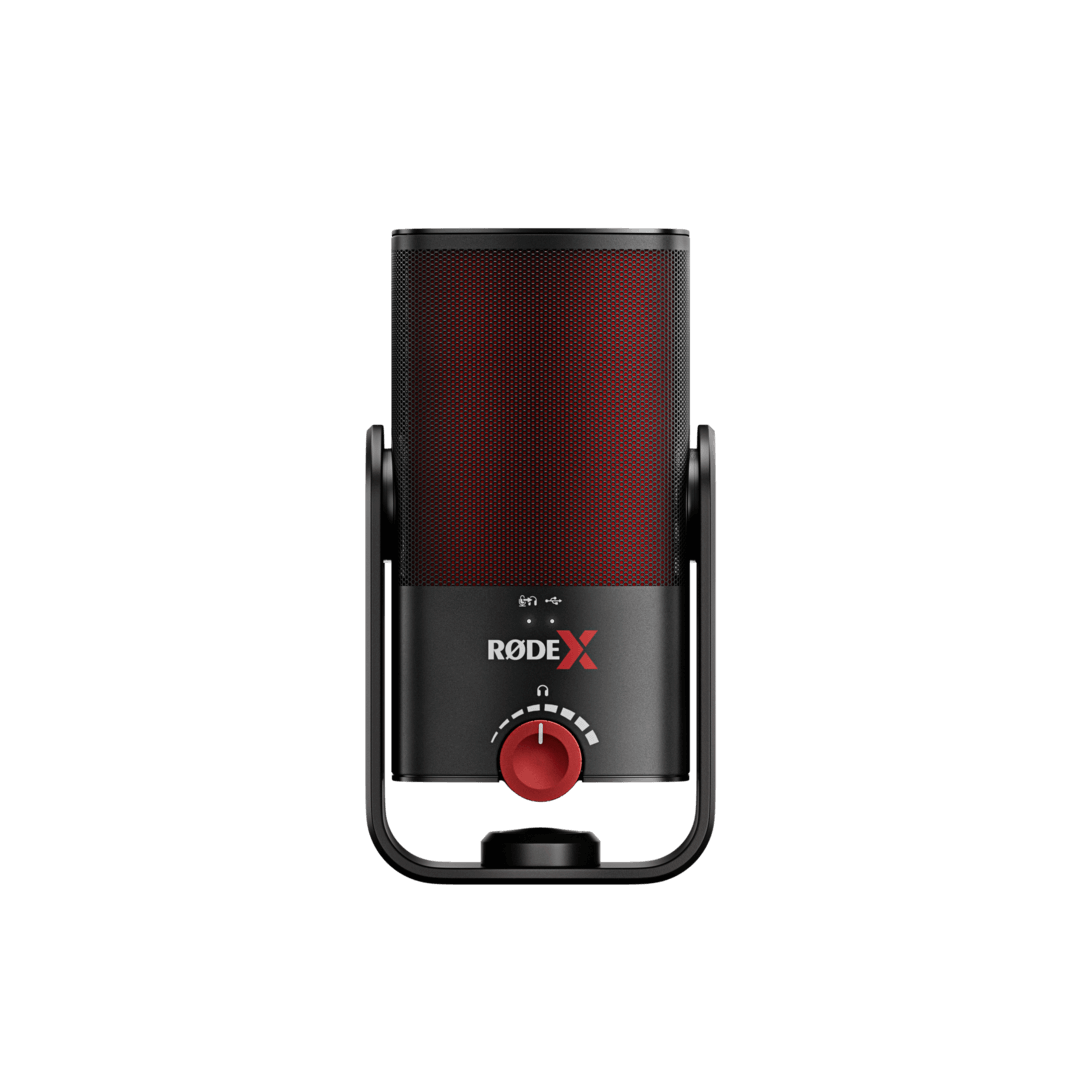Plosive Protection
The simplest and most effective way to reduce the impact of plosives on your audio is to use a pop shield (or pop filter), which acts to dissipate the energy of plosive puffs of air before they hit the microphone capsule. Some mics – the XCM-50 and XDM-100 included – have pop shields built into the mic itself, and the latter comes with an external pop shield as well.
If your audio still suffers from plosives with this protection in place, you can try angling your mic so you’re not speaking squarely into it, but rather a little to the side of it. This means that the puffs of air from plosive sounds don’t go directly into the microphone capsule, lessening their impact.
Visuals
Last but not least, it’s worth considering how the placement of your mic will affect the visual aesthetic of your stream. Obviously, you don’t want the mic to completely obstruct your face (or maybe you do), but having it too far away is problematic for all the reasons we’ve mentioned. As such, it’s worth experimenting with keeping it just out of, or at the edge of your shot while still being close enough to your mouth to give you rich, clear audio (a studio arm can help immensely with this positioning).
Combining all of these tips will give you crystal clear audio with a rich, broadcast-quality tone to your voice, but if you’re unable to employ all of these recommendations, implementing just a few of them will still go a long way in improving the audio quality on your stream.
For a complete audio solution for streaming and gaming, check out the XDM-100 or XCM-50 and UNIFY.
